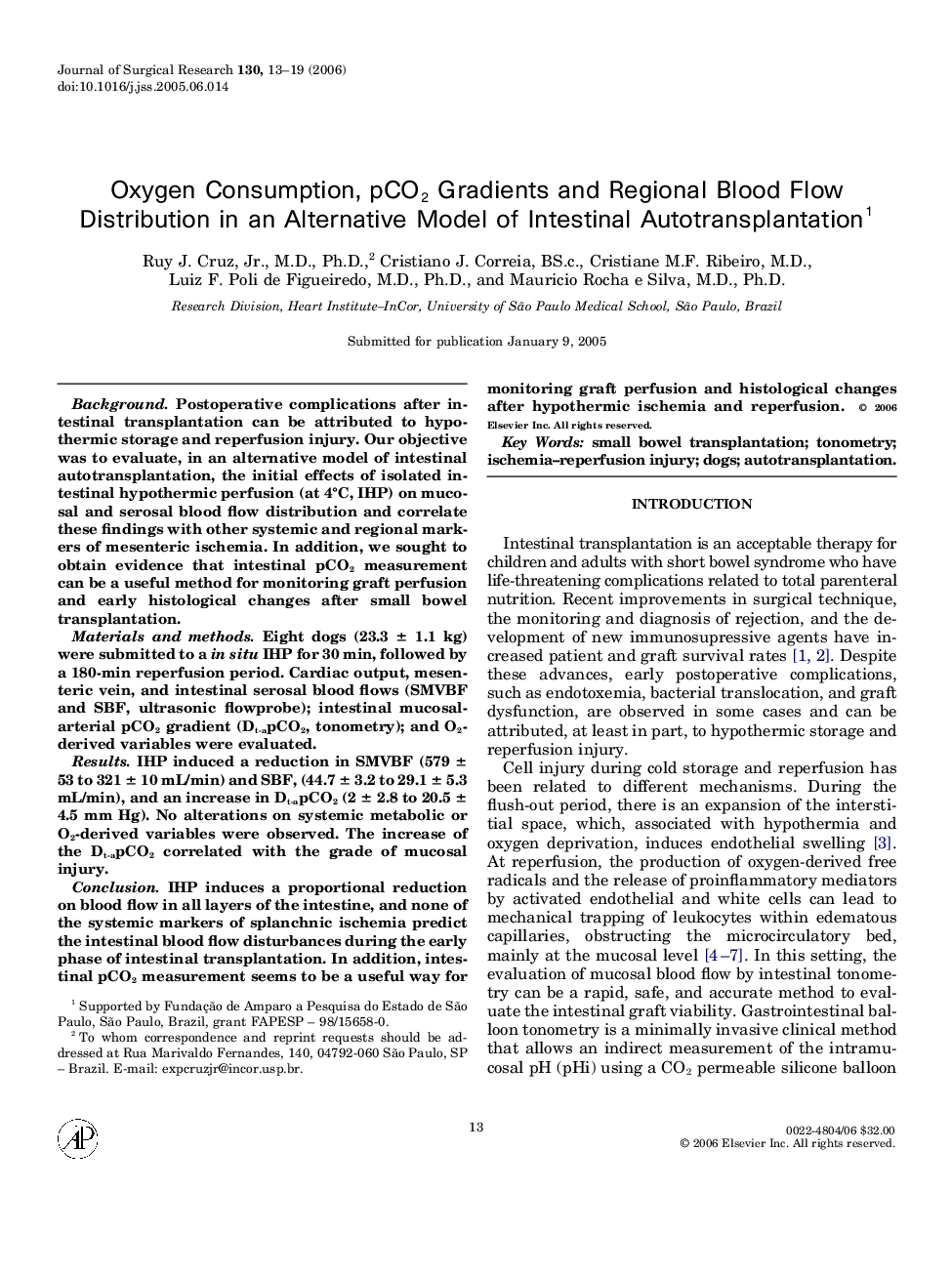| Article ID | Journal | Published Year | Pages | File Type |
|---|---|---|---|---|
| 4305448 | Journal of Surgical Research | 2006 | 7 Pages |
BackgroundPostoperative complications after intestinal transplantation can be attributed to hypothermic storage and reperfusion injury. Our objective was to evaluate, in an alternative model of intestinal autotransplantation, the initial effects of isolated intestinal hypothermic perfusion (at 4°C, IHP) on mucosal and serosal blood flow distribution and correlate these findings with other systemic and regional markers of mesenteric ischemia. In addition, we sought to obtain evidence that intestinal pCO2 measurement can be a useful method for monitoring graft perfusion and early histological changes after small bowel transplantation.Materials and methodsEight dogs (23.3 ± 1.1 kg) were submitted to a in situ IHP for 30 min, followed by a 180-min reperfusion period. Cardiac output, mesenteric vein, and intestinal serosal blood flows (SMVBF and SBF, ultrasonic flowprobe); intestinal mucosal-arterial pCO2 gradient (Dt-apCO2, tonometry); and O2-derived variables were evaluated.ResultsIHP induced a reduction in SMVBF (579 ± 53 to 321 ± 10 mL/min) and SBF, (44.7 ± 3.2 to 29.1 ± 5.3 mL/min), and an increase in Dt-apCO2 (2 ± 2.8 to 20.5 ± 4.5 mm Hg). No alterations on systemic metabolic or O2-derived variables were observed. The increase of the Dt-apCO2 correlated with the grade of mucosal injury.ConclusionIHP induces a proportional reduction on blood flow in all layers of the intestine, and none of the systemic markers of splanchnic ischemia predict the intestinal blood flow disturbances during the early phase of intestinal transplantation. In addition, intestinal pCO2 measurement seems to be a useful way for monitoring graft perfusion and histological changes after hypothermic ischemia and reperfusion.
